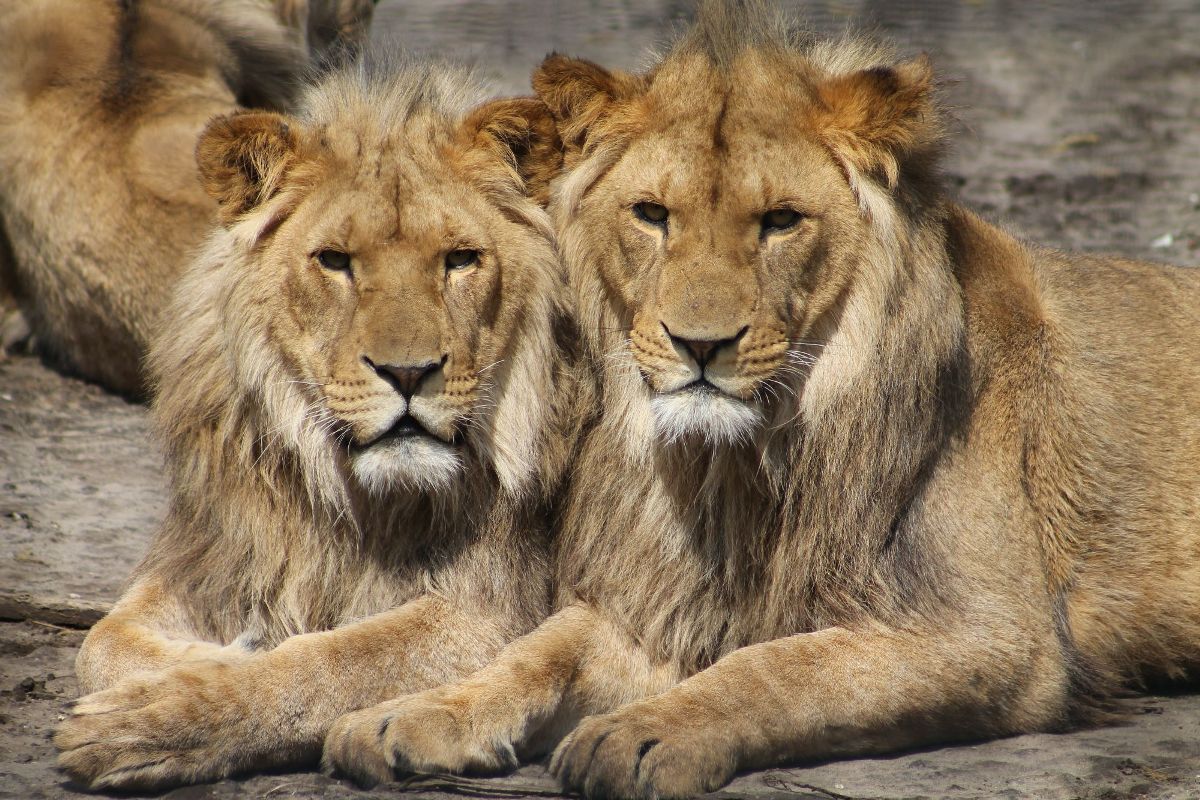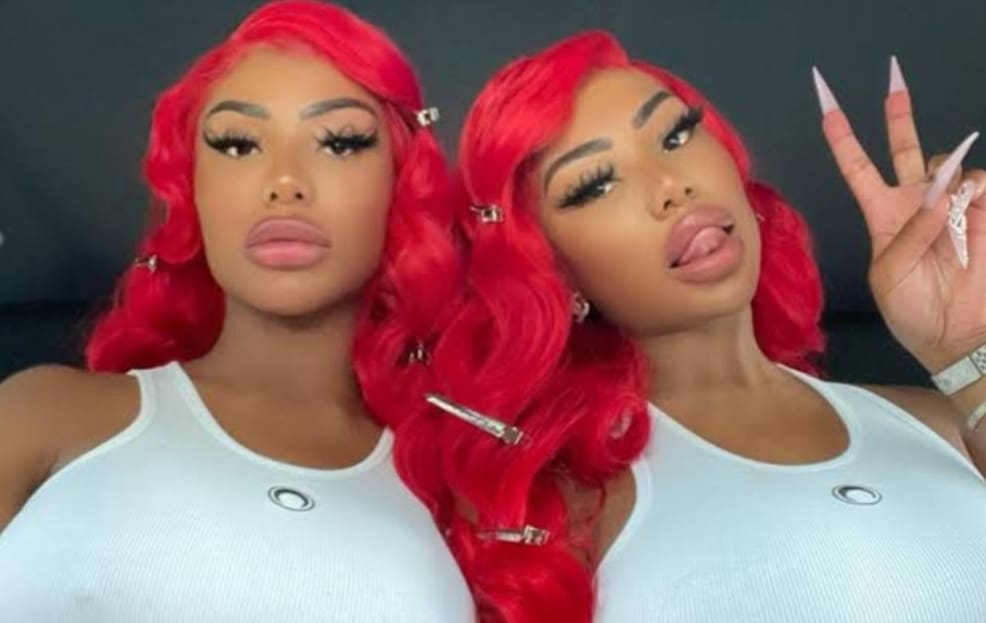Do You Have A Doppelganger? Exploring "Looks Like Twins"
Do you ever find yourself doing a double-take, convinced you've seen someone you know, only to realize they're a complete stranger? The phenomenon of individuals bearing an uncanny resemblance to each other, despite lacking any biological ties, is a captivating puzzle that has intrigued humanity for generations. This intriguing interplay between genetics, environment, and chance gives rise to the intriguing concept of "looks like twins."
It's not merely a matter of shared genetics; it delves into the fascinating realm of unexpected similarities. These resemblances can spark everything from amusing mix-ups to the rise of celebrity doppelgangers. Unraveling the driving forces behind these astonishing parallels allows us to appreciate the breadth of human variety and the intricate dance of genetic expression.
This exploration ventures into the world of "looks like twins," meticulously examining its scientific foundations, cultural resonance, and the compelling narratives of those who embody this unique phenomenon. Whether you're driven by curiosity or have a personal connection to this topic, this comprehensive guide aims to provide valuable insights.
- Unlocking The Crossword Melon Like Tropical Fruit Its Papaya
- Discover The Secrets Of Coco Love Bf A Viral Sensation
Table of Contents
- The Science Behind Looking Like Twins
- Genetics and Resemblance
- Psychology of Twin Resemblance
- Famous Lookalikes: Celebrities Who Look Like Twins
- Cultural Impact of Looking Like Twins
- Real-Life Stories of People Who Look Like Twins
- Benefits of Looking Like Twins
- Challenges of Being Mistaken for Twins
- The Role of Technology in Identifying Lookalikes
- The Future of Twin Resemblance
The Science Behind Looking Like Twins
The notion of "looks like twins" is firmly rooted in the realm of scientific inquiry. While identical twins possess identical DNA blueprints, unrelated individuals can display striking similarities owing to genetic mutations, the inheritance of shared traits, and the influence of environmental factors. For years, scientists have dedicated themselves to studying the origins of these remarkable resemblances.
Research published in the Journal of Human Genetics has shown that certain genetic markers can contribute to similar physical features in unrelated individuals. These markers influence traits such as facial structure, hair color, and eye shape, creating the illusion of a twin-like appearance.
How Genetics Play a Role
Genetics is the primary driver of physical appearance. However, it extends beyond the simple code of DNA. Epigenetics, the study of how external factors affect gene expression, also plays a significant role. For instance, individuals exposed to comparable environments may develop similar traits over time.
- Heidi Klums Young Model Days A Journey To Supermodel Fame
- Hdhub4u Rest Your Guide To Free Hd Movies Tv Shows Year
- Genetic mutations can lead to identical physical features.
- Environmental factors can enhance or diminish genetic traits.
- Shared ancestry may contribute to similar appearances.
Genetics and Resemblance
A solid understanding of genetics is essential when discussing "looks like twins." While identical twins share 100% of their DNA, non-related individuals can share up to 50% of their genetic makeup. This shared genetic material can manifest in striking similarities.
Key Genetic Factors
Several genetic factors contribute to twin-like resemblance:
- Facial Structure: The shape of the face, including the jawline and cheekbones, is heavily influenced by genetics.
- Hair Texture and Color: Hair characteristics are determined by specific genes, which can be shared by unrelated individuals.
- Eye Color: Eye color is controlled by multiple genes, making it a common trait for resemblance.
Research conducted by the National Institutes of Health underscores the importance of these genetic factors in determining physical appearance.
| Feature | Description |
|---|---|
| Facial Structure | The shape of the face, including the jawline and cheekbones, is heavily influenced by genetics. |
| Hair Texture and Color | Hair characteristics are determined by specific genes, which can be shared by unrelated individuals. |
| Eye Color | Eye color is controlled by multiple genes, making it a common trait for resemblance. |
| Overall appearance | This is determined by the genetic and environmental influence of the person |
Psychology of Twin Resemblance
Beyond the scientific aspects, the psychology of twin resemblance is equally captivating. Individuals who share the "looks like twins" phenomenon frequently encounter unique social interactions and emotional connections. This can give rise to feelings of camaraderie and shared identity.
Social Implications
Being mistaken for twins can lead to a range of social implications:
- Positive Reactions: Many people embrace the attention and admiration that come with the perception of looking like twins.
- Negative Reactions: Some may find the constant comparisons and inquiries uncomfortable.
- Identity Issues: Individuals may struggle with defining their own identities when frequently compared to someone else.
A study published in the Journal of Social Psychology delves into the emotional impact of twin resemblance on personal relationships and self-esteem.
Famous Lookalikes
The realm of entertainment is brimming with celebrities who share striking resemblances, despite their lack of biological connections. These uncanny similarities often spark viral moments and capture media attention. Below are some prominent examples:
Notable Celebrity Lookalikes
- Brad Pitt and Ryan Phillippe: These actors share striking similarities in facial structure and hair color.
- Taylor Swift and Emma Watson: Both women share similar facial features and hairstyles, sparking frequent comparisons.
- Leonardo DiCaprio and Orlando Bloom: These actors are often mistaken for twins because of their youthful appearances and comparable characteristics.
Celebrity lookalikes serve as a testament to the power of genetic resemblance and its impact on popular culture.
Cultural Impact of Looking Like Twins
The "looks like twins" phenomenon transcends individual experiences, leaving a significant cultural impact. In numerous societies, twins are regarded as symbols of good fortune and prosperity. This cultural significance influences how people perceive and respond to twin-like resemblances.
Cultural Beliefs
Various cultures hold unique beliefs concerning twins:
- African Traditions: In certain African cultures, twins are deemed sacred and celebrated through special ceremonies.
- Western Perceptions: Western societies often romanticize twins, portraying them as mysterious and captivating figures.
- Asian Influences: In many Asian cultures, twins are seen as symbols of harmony and balance.
Understanding these cultural perspectives can enhance our appreciation for the phenomenon of twin resemblance.
Real-Life Stories of People Who Look Like Twins
Throughout history, numerous real-life stories have emerged, featuring individuals who resemble twins despite lacking biological ties. These stories highlight the power of genetic resemblance and its impact on personal relationships.
Stories of Unrelated Twins
- Sarah and Emily: Two women from different countries discovered their uncanny resemblance during a chance encounter on social media.
- John and Michael: These men, living on opposite sides of the globe, were astounded to discover their twin-like appearance after exchanging photos online.
- Anna and Sophia: Sisters-in-law who share a striking resemblance despite lacking any biological connection.
These stories demonstrate the power of modern technology in bringing together individuals who look like twins.
Benefits of Looking Like Twins
While being mistaken for twins can present its share of challenges, it also offers a multitude of benefits. From distinctive social interactions to opportunities for personal growth, the experience of looking like twins can be enriching.
Advantages of Twin Resemblance
- Increased Attention: People who look like twins often receive positive attention and admiration.
- Shared Experiences: Twin resemblance can foster meaningful connections and friendships.
- Personal Growth: Navigating the challenges of twin resemblance can enhance self-awareness and confidence.
Embracing the benefits of looking like twins can contribute to a more fulfilling life experience.
Challenges of Being Mistaken for Twins
Despite the advantages, being mistaken for twins can also bring about challenges. These challenges range from identity issues to social pressures and misunderstandings.
Common Challenges
- Identity Confusion: Individuals may grapple with defining their own identities when they are constantly compared to someone else.
- Social Misunderstandings: Friends and family might struggle to differentiate between lookalikes, leading to awkward situations.
- Pressure to Conform: Some individuals feel compelled to uphold their twin-like resemblance, even if it doesn't align with their personal preferences.
Addressing these challenges necessitates comprehension and empathy from both the individuals involved and their social circles.
The Role of Technology in Identifying Lookalikes
Modern technology has revolutionized how we identify and connect with lookalikes. Facial recognition software and social media platforms have made it easier than ever to find individuals who bear striking resemblances.
Technological Advancements
- Facial Recognition: Algorithms can now identify individuals with striking resemblances based on their facial features.
- Social Media: Platforms like Instagram and Facebook have become hubs for connecting lookalikes from around the world.
- Apps and Tools: Specialized apps enable users to upload photos and readily discover potential twins.
These technological advancements have expanded our understanding of twin resemblance and its global reach.
The Future of Twin Resemblance
As science and technology continue to evolve, our understanding of twin resemblance will deepen. Future research may unveil new genetic markers and environmental factors that contribute to this phenomenon. Additionally, advancements in facial recognition technology will make it easier to identify and connect with lookalikes worldwide.
Looking Ahead
- Scientific Breakthroughs: Ongoing studies may reveal new insights into the genetic basis of twin resemblance.
- Technological Innovations: Future tools and platforms will enhance our ability to connect with lookalikes.
- Cultural Evolution: Societal attitudes toward twin resemblance may shift as we gain a deeper understanding of its complexities.
The future of twin resemblance is bright, offering boundless possibilities for discovery and connection.
- Movierulzcom Is It Safe Risks Legality Alternatives
- Michael Jacksons Plastic Surgery A Deep Dive Unveiling The Truth

From The Roaring in Wallpaper Wizard — HD Desktop Background With 3

Pusheen Things Pip Kinda Looks Like

Clermont Twins' Before & After Looks Did The Sisters Get Plastic Surgery?